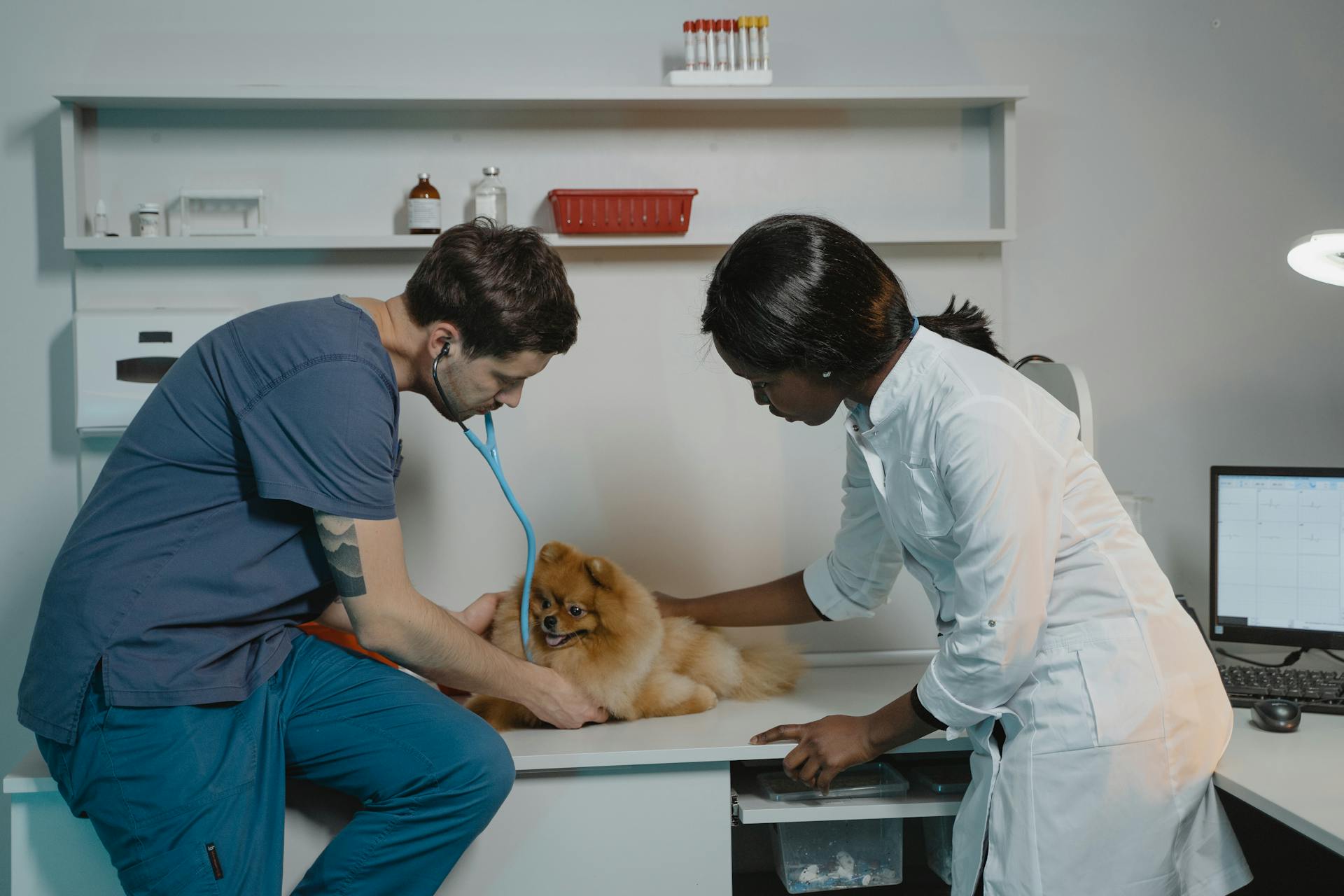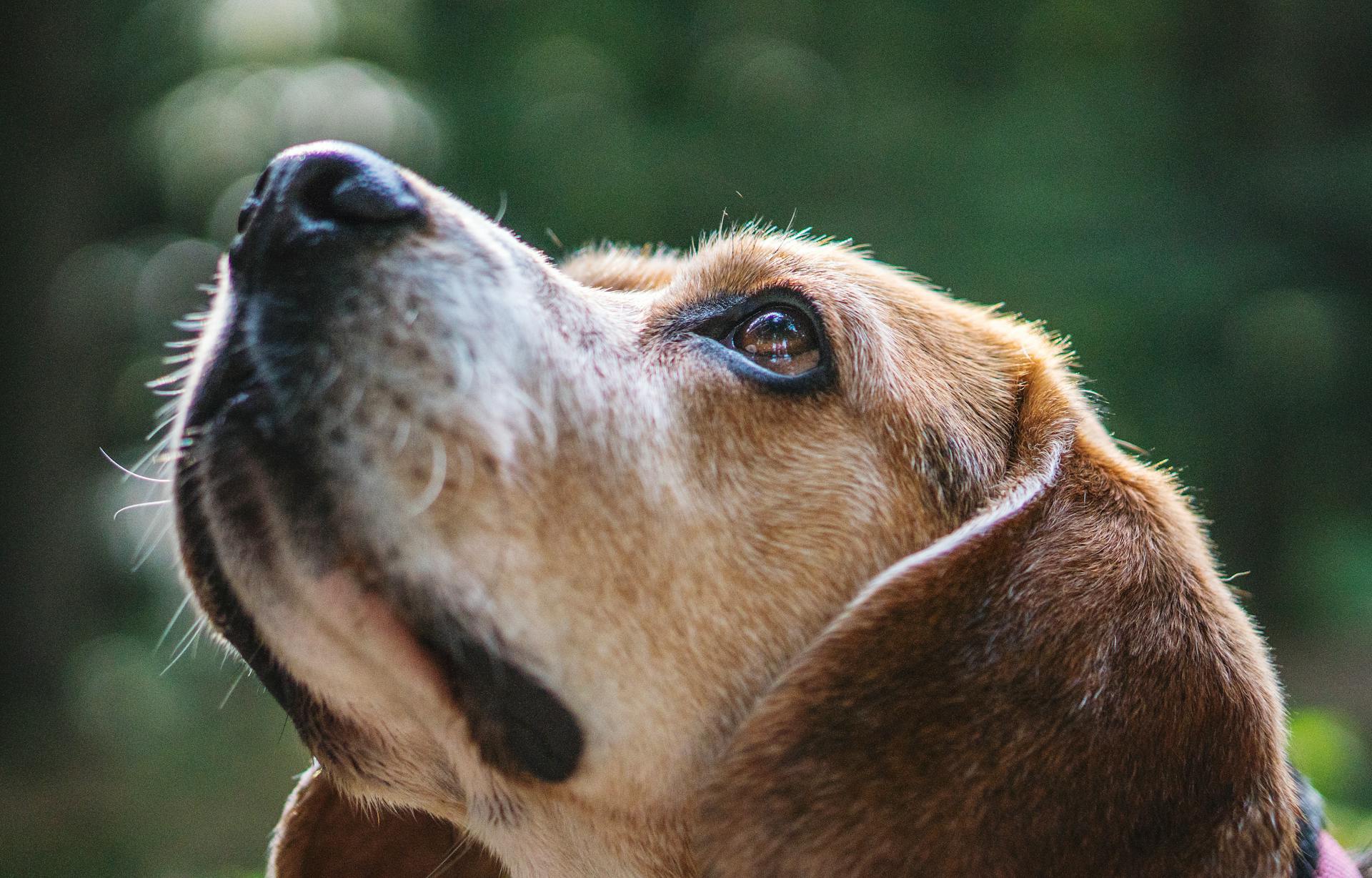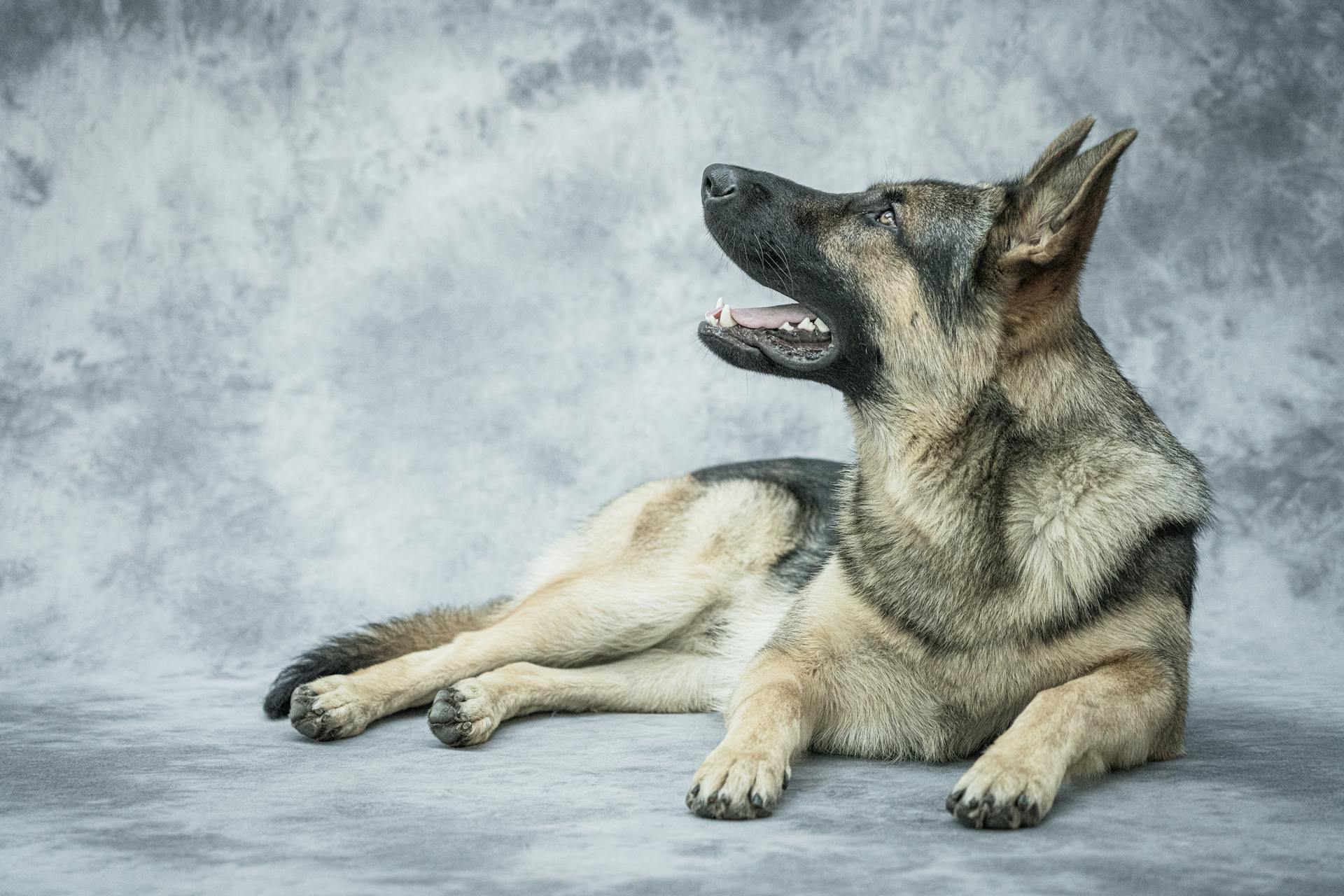
Creating a stress-free experience for anxious dogs during grooming requires patience and understanding. Research shows that dogs can sense their owner's anxiety, making it essential to remain calm.
Gradual exposure to grooming tools and processes can help desensitize anxious dogs. This can be done by introducing new tools and experiences in small steps, allowing the dog to become comfortable with each one.
Desensitization techniques, such as touch therapy, can also be effective in reducing anxiety. By gently touching the dog's paws, ears, and belly, owners can help their dog become more relaxed during grooming.
A quiet and comfortable environment can also help anxious dogs feel more at ease. This can be achieved by grooming in a quiet room or using calming aids like pheromone diffusers.
Preparing for Grooming
To help your dog feel more at ease during grooming, it's essential to prepare in advance. This can be as simple as combing your dog's fur on a soft mat to prevent slipping or falling on hard flooring.
Notice how your dog reacts to grooming tools, and be prepared to switch to a brush with softer bristles if they cower or try to slip away.
A training visit to the groomer without any grooming being done can be a great way to accustom your dog to the sights and sounds of the groomer. This can include the noise of clippers or dryers.
Pair the visit with events your dog enjoys, such as play, treat training, or going on a walk. This will help your dog associate the groomer with positive experiences.
Follow up with lots of treats to reinforce this positive association. This will help your dog learn to look forward to grooming sessions.
Consistency is key when it comes to preparing your dog for grooming. Regular grooming sessions will help your dog become accustomed to the process, making it easier to try new things and reducing anxiety over time.
By maintaining a consistent schedule, you can help your dog expect grooming practices as a normal part of their daily or weekly routine.
Expand your knowledge: Dog Grooming Usa & Groomer Artist Academy
Creating a Comfortable Environment
Minimizing noise and distractions is key to creating a calm atmosphere for anxious dogs. Silence is golden, and providing a quiet experience can help reduce your dog's stress levels.
At Pet Evolution, they understand this and create a quiet experience whenever possible. Their grooming stations are designed as safe havens, allowing pets to unwind in a stress-free oasis.
By creating a peaceful environment, you can help your anxious dog feel more at ease during grooming. This can make the experience less intimidating and more enjoyable for both you and your dog.
Related reading: Dog Boarding for Anxious Dogs
Grooming Techniques
Soothing petting is essential in maintaining a comforting atmosphere during grooming sessions.
Your dog will respond positively to the sound of your voice, but avoid employing a stern or harsh tone.
Positive reinforcement is key, and a reward will keep your dog compliant during grooming.
A reward should not include too many treats at once to avoid overindulging your dog.
Pheromone diffusers can also be useful in promoting a calm demeanor in your dogs.
Certain scents, such as frankincense, ginger, rosemary, and vanilla, are known to have calming effects on dogs.
If this caught your attention, see: How to Groom Your Dog during Quarantine?
Training and Preparation
Training and Preparation is key to making grooming sessions a success for anxious dogs. Muzzle training can make grooming easier and safer for both your dog and the groomer. Train your dog to willingly put their nose into the muzzle by smearing a soft treat, like peanut butter, on the inside or use a basket muzzle with small openings.
To create a comfortable grooming environment, try combing your dog's fur on a soft mat to prevent slipping or falling on hard flooring. Notice how your dog reacts to grooming tools and adjust your approach accordingly. If your dog cowers or tries to slip away in response to a particular comb, try switching to a brush with softer bristles.
Preparing in advance and being consistent with dog grooming is crucial. Use a consistent combination of home grooming and professional grooming services to keep your pet's coat healthy and attractive. As your dog becomes more comfortable with these practices, future grooming sessions will become easier.
You might enjoy: Dog Grooming Training
Customized Plans

Our groomers craft personalized experiences to cater to your pet's comfort level, so you can rest assured they'll feel at ease.
Collaboration with our team is essential to creating a grooming plan that ensures your pet leaves looking and feeling their best. We believe in teamwork, and we encourage you to collaborate with our groomers to create a plan that suits your pet's unique needs.
At Pet Evolution, we understand that every pet is different, and that's why we offer customized grooming plans. Our certified groomers don't just pamper; they transform the grooming experience into a spa day filled with care and love.
Here are some key benefits of our customized plans:
- Tailoring grooming sessions to individual pet needs
- Collaboration with pet owners for a positive experience
Pet Handling Training
Pet handling training is a crucial aspect of pet care, especially for dogs that experience grooming anxiety. Muzzle training can make grooming easier and safer for both your dog and the groomer.
A muzzle can be a game-changer for dogs that are difficult to handle. By training your dog to willingly put their nose into the muzzle, you can reduce the need for other types of restraint. Smearing soft treats like peanut butter on the inside of the muzzle can help your dog get used to it.
On a similar theme: Dog Grooming Muzzle
If your dog is already anxious, it's essential to start with small steps. You can begin by letting your dog sniff the muzzle while giving them treats. Gradually increase the time your dog spends wearing the muzzle, always rewarding them with treats and praise.
Some dogs may not respond well to muzzle training, so it's essential to be patient and consistent. If your dog is still struggling, consult with your veterinarian about professional training or medication options.
Here are some tips for handling grooming anxiety:
- Understand pet behavior and body language
- Implement stress-reducing techniques, such as gentle handling and soothing voices
- Collaborate with your veterinarian for guidance on professional training and medication options
By following these tips and being patient with your dog, you can help them feel more comfortable during grooming sessions.
Managing Anxiety
Pets can develop anxiety from previous negative experiences, such as traumatic grooming encounters. These experiences can leave a lasting mark, causing your pet to associate grooming with discomfort or fear.
Traumatic grooming encounters can create a fear loop that needs gentle unraveling. This is why it's essential to understand your dog's past experiences and tailor your approach accordingly.
See what others are reading: Fear Free Dog Grooming
Sensory sensitivities can also contribute to anxiety in pets. Overstimulation from grooming tools, noise, and unfamiliar smells can trigger unease in our pets with heightened senses.
Professional groomers can help ease pet anxiety by creating a spa-like experience. They understand pet behavior and implement stress-reducing techniques, such as gentle handling and soothing voices.
Gentle and patient approach is crucial when grooming anxious pets. Allowing them to acclimate to the grooming space and gradually introducing them to grooming tools can help reduce anxiety.
Breaks and rewards can also help calm anxious pets. Incorporating short breaks during grooming sessions and rewarding calm behavior with treats or affection can create positive associations with grooming.
Understanding individual preferences is key to managing anxiety in pets. Tailoring grooming techniques to your pet's comfort level and building trust through positive interactions can make grooming a more enjoyable experience.
Some common signs of anxiety in pets include excessive panting or drooling, aggressive behavior, and attempting to escape or hide.
Aromatherapy and synthetic pheromone diffusers can also help calm anxious pets. Lavender essential oil and synthetic pheromone diffusers can help reduce anxiety and create a relaxing environment.
If your dog is extremely anxious or fearful during grooming, it may be necessary to consult with a veterinarian about medical sedation options.
Frequently Asked Questions
Can I sedate my dog for grooming?
Yes, sedation medications for dogs are available, but they may not work for every dog, so consult your vet for personalized advice. Your vet can help determine if medical sedation is the right option for your dog's grooming needs.
How do groomers deal with difficult dogs?
Groomers use restraints like loops and towels to keep dogs safe, and have muzzles on hand for the toughest cases. These devices are designed to ensure the dog's safety, not to cause harm.
Sources
- https://www.dixah.com/site/blog/2022/12/15/dog-grooming-anxiety
- https://www.petevolution.com/blog/sensitive-souls-catering-to-pets-with-grooming-anxiety-or-sensitivities/
- https://www.catawbaanimal.com/site/blog/2023/02/15/groom-senior-cat-copy
- https://www.waghotels.com/blog/how-to-calm-a-dog-for-grooming-tips-and-techniques/
- https://www.wolfeanimal.com/site/blog/2022/05/30/dog-grooming-anxiety
Featured Images: pexels.com

